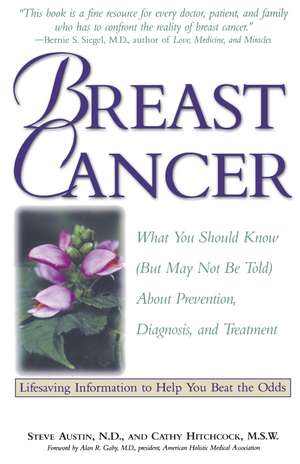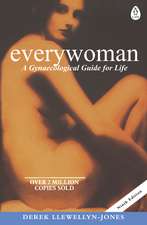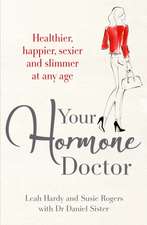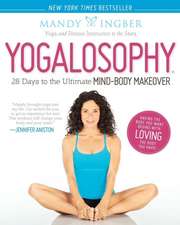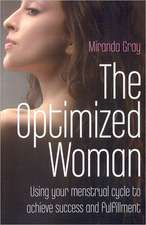Breast Cancer: What You Should Know (But May Not Be Told) about Prevention, Diagnosis, and Trea Tment
Autor Steve Austin, Cathy Hitchcocken Limba Engleză Paperback – 31 mai 1994
—Bernie S. Siegel, M.D., Author of Love, Medicine, and Miracles
Attitudes about breast cancer diagnosis are changing, and women and their families are becoming more assertive about managing their disease. They know that more choices are available now than ever before, and they are willing to make them.
This book encourages you to take control. Cathy Hitchcock and Steve Austin, N.D., have written a book for women who are ready to actively participate in their diagnosis and treatment.
A husband and wife team, Hitchcock and Austin walk you step-by-step through each part of diagnosis, treatment (both conventional and alternative), and prevention (including prevention of a recurrence). With the help of a flow chart, they examine different diagnosis options. They also suggest questions to ask your doctor and offer checklists, summaries, and overviews.
Interwoven with all this information, Cathy shares her personal story as a breast cancer survivor. She describes her ordeal upon discovering the lump and the transitions she has gone through to live with the diagnosis in a life-affirming way. Unlike many other breast cancer patients, Cathy didn’t simply accept the choices offered by medical doctors. Instead, with the help of her husband, she studied the research and made her own decisions about conventional and alternative treatments.
Preț: 113.68 lei
Nou
Puncte Express: 171
Preț estimativ în valută:
21.76€ • 23.62$ • 18.27£
21.76€ • 23.62$ • 18.27£
Carte disponibilă
Livrare economică 01-15 aprilie
Preluare comenzi: 021 569.72.76
Specificații
ISBN-13: 9781559583626
ISBN-10: 1559583622
Pagini: 336
Dimensiuni: 137 x 216 x 23 mm
Greutate: 0.39 kg
Editura: Prima Lifestyles
ISBN-10: 1559583622
Pagini: 336
Dimensiuni: 137 x 216 x 23 mm
Greutate: 0.39 kg
Editura: Prima Lifestyles
Notă biografică
Cathy Hitchcock, M.S.W., L.C.S.W., has a private counseling practice centered on women’s issues.
Steve Austin, N.D., is a licensed naturopathic physician and Professor of Nutrition at National College of Naturopathic Medicine in Portland, Oregon.
Steve Austin, N.D., is a licensed naturopathic physician and Professor of Nutrition at National College of Naturopathic Medicine in Portland, Oregon.
Cuprins
Contents
Foreword
Acknowledgments
Introduction
Part 1: Diagnostic Choices
1. Shock
2. My Diagnosis
3. Your Diagnosis
Physical Exam and Medical History
Mammography
Diagnostic Ultrasound
Biopsy
Axillary Dissection/Nodal Sampling
Blood Tests
Chest X Rays
Pathology Report
Scans
The New Genetic Test
Questions to Ask Your Doctor After a Cancer Diagnosis
4. My Reaction to Diagnosis
Part 2: Treatment Choices
5. Your Surgical and Radiation Choices
Toward More Limited Surgery
Mastectomy versus Lumpectomy
The Value of Surgery
When Should Surgery Be Done?
Breast Reconstruction
Radiation versus No Radiation
6. My Surgical and Radiation Decisions
7. Should You Have Chemotherapy or Ovarian Ablation?
The Concept of Adjuvant Chemotherapy
The Concept of "Success" with Chemotherapy
The Drugs
Chemotherapy and Node-Negative Women
Chemotherapy, Ovarian Ablation, and Node-Positive Women
Chemotherapy for Women over 70
Chemotherapy to Avoid Mastectomy in Patients with Large Tumors
An Overview
8. Why I Didn't Have Chemotherapy
9. Tamoxifen
What Does Tamoxifen Do?
Using Tamoxifen to Treat Breast Cancer
Estrogen Receptor Status
Tamoxifen and Node-Negative Patients
Tamoxifen and Node-Positive Patients
Tamoxifen and Menopausal Status
Tamoxifen Toxicity
Potential Side Benefits of Tamoxifen
Tamoxifen and Chemotherapy
Tamoxifen and Healthy Women: The Prevention Trial
Tamoxifen Checklist
10. Your Alternative Choices for Treatment
Metabolic Therapy (Laetrile)
Shark Cartilage
The Gerson Therapy
The Macrobiotic Diet
The Hoxsey Formula
Linus Pauling and Vitamin C Therapy
Psychological Intervention
Other Alternative Therapies
11. My Alternative Treatment Decisions
Part 3: Preventing Breast Cancer
12. Diet and Prevention
Dietary Fat
Fiber
Anticancer Foods
Organically Grown Food
The Big Picture
13. Supplements and Prevention
Supplements and Conventional Medical Philosophy
Primary Prevention, Secondary Prevention
Antioxidants and Prevention
The FDA versus Science
Vitamin C and Prevention
Beta-Carotene and Prevention
Selenium and Prevention
Vitamin E and Prevention
A Review of Possible Antioxidant Doses
Sunshine, Vitamin D, and Prevention
Iron and Cancer
Exotic Supplements
14. Lifestyle and Prevention
Exercise
Alcohol
Coffee
Green Tea
Weight
Sunshine
Estrogen Replacement Therapy and the Birth Control Pill
Electromagnetic Waves
EcoCancers
15. Developing My Prevention Lifestyle
Eating and Deprivation
Eating Out, Eating In, and In Between
Developing a Prevention Lifestyle
Part 4: Living with Breast Cancer
16. Dealing with Change
17. No More Headaches
18. Getting On with Our Lives
APPENDIX A: Making the Transition: Eating In, Eating Out
APPENDIX B: Guided Imagery/Stress Release Tapes
APPENDIX C: Food Sources of Antioxidants
APPENDIX D: Iron-Free Multivitamin/Mineral Sources
Questions to Ask Your Doctor After a Cancer Diagnosis
Glossary
Index
About the Authors
Foreword
Acknowledgments
Introduction
Part 1: Diagnostic Choices
1. Shock
2. My Diagnosis
3. Your Diagnosis
Physical Exam and Medical History
Mammography
Diagnostic Ultrasound
Biopsy
Axillary Dissection/Nodal Sampling
Blood Tests
Chest X Rays
Pathology Report
Scans
The New Genetic Test
Questions to Ask Your Doctor After a Cancer Diagnosis
4. My Reaction to Diagnosis
Part 2: Treatment Choices
5. Your Surgical and Radiation Choices
Toward More Limited Surgery
Mastectomy versus Lumpectomy
The Value of Surgery
When Should Surgery Be Done?
Breast Reconstruction
Radiation versus No Radiation
6. My Surgical and Radiation Decisions
7. Should You Have Chemotherapy or Ovarian Ablation?
The Concept of Adjuvant Chemotherapy
The Concept of "Success" with Chemotherapy
The Drugs
Chemotherapy and Node-Negative Women
Chemotherapy, Ovarian Ablation, and Node-Positive Women
Chemotherapy for Women over 70
Chemotherapy to Avoid Mastectomy in Patients with Large Tumors
An Overview
8. Why I Didn't Have Chemotherapy
9. Tamoxifen
What Does Tamoxifen Do?
Using Tamoxifen to Treat Breast Cancer
Estrogen Receptor Status
Tamoxifen and Node-Negative Patients
Tamoxifen and Node-Positive Patients
Tamoxifen and Menopausal Status
Tamoxifen Toxicity
Potential Side Benefits of Tamoxifen
Tamoxifen and Chemotherapy
Tamoxifen and Healthy Women: The Prevention Trial
Tamoxifen Checklist
10. Your Alternative Choices for Treatment
Metabolic Therapy (Laetrile)
Shark Cartilage
The Gerson Therapy
The Macrobiotic Diet
The Hoxsey Formula
Linus Pauling and Vitamin C Therapy
Psychological Intervention
Other Alternative Therapies
11. My Alternative Treatment Decisions
Part 3: Preventing Breast Cancer
12. Diet and Prevention
Dietary Fat
Fiber
Anticancer Foods
Organically Grown Food
The Big Picture
13. Supplements and Prevention
Supplements and Conventional Medical Philosophy
Primary Prevention, Secondary Prevention
Antioxidants and Prevention
The FDA versus Science
Vitamin C and Prevention
Beta-Carotene and Prevention
Selenium and Prevention
Vitamin E and Prevention
A Review of Possible Antioxidant Doses
Sunshine, Vitamin D, and Prevention
Iron and Cancer
Exotic Supplements
14. Lifestyle and Prevention
Exercise
Alcohol
Coffee
Green Tea
Weight
Sunshine
Estrogen Replacement Therapy and the Birth Control Pill
Electromagnetic Waves
EcoCancers
15. Developing My Prevention Lifestyle
Eating and Deprivation
Eating Out, Eating In, and In Between
Developing a Prevention Lifestyle
Part 4: Living with Breast Cancer
16. Dealing with Change
17. No More Headaches
18. Getting On with Our Lives
APPENDIX A: Making the Transition: Eating In, Eating Out
APPENDIX B: Guided Imagery/Stress Release Tapes
APPENDIX C: Food Sources of Antioxidants
APPENDIX D: Iron-Free Multivitamin/Mineral Sources
Questions to Ask Your Doctor After a Cancer Diagnosis
Glossary
Index
About the Authors
Descriere
For women who want to actively participate in their diagnosis and treatment, this book explores pertinent medical information about breast cancer currently neglected by popular breast cancer books and by both conventional and alternative medicine. Illustrations and charts.
